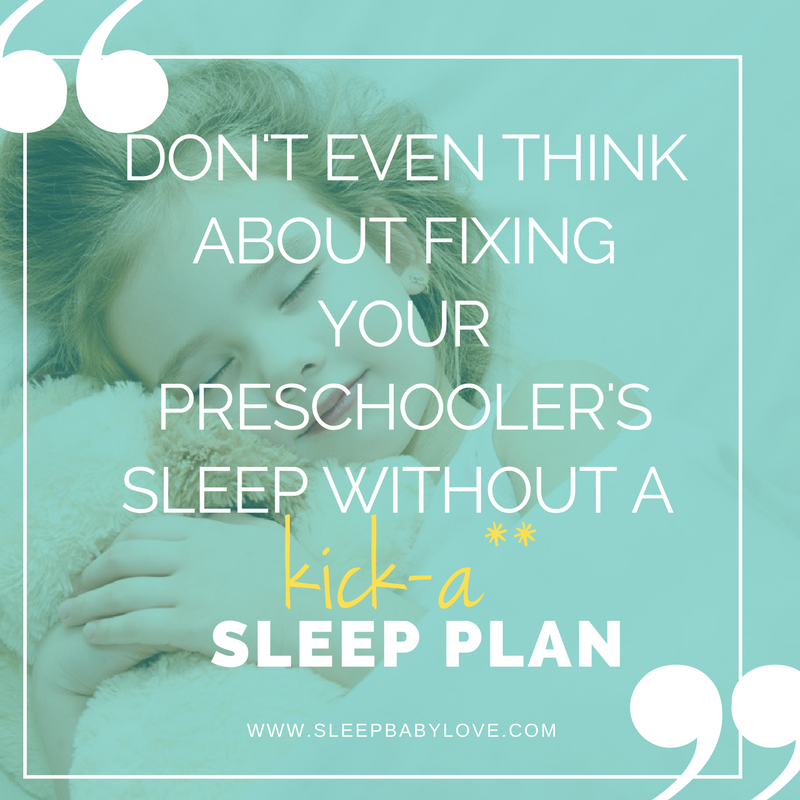How To Stop A Toddler Sleep Regression: 6 Tips to End Sleep Battles (2-6)
Why does it seem like your friends have the perfect sleepers and you’re struggling with sleep each and every day? How hard could it be to help toddler or preschooler sleep as they should? Why is everything such a battle? What’s up with this toddler or preschooler sleep regression?
Well my friends, I too had issues getting my 2-year-old to sleep (after a horrible, way too early transition from the crib to the toddler bed). So, take my word, if I could get my child sleep better again, so can you with the best toddler and preschooler advice around.
How long does a toddler sleep regression last?
The million-dollar question if how long will sleep issues with your 2, 3, or 4 year-old last?
I wish I knew the answer.
You probably could ask your friends and they will tell you that my child was off for just a couple of weeks. I hate to be the bearer of bad news, but clients come to me after dealing with sleep challenges for years! Yes, years!
If your 3 year old won’t sleep, or if your 2,3 or 4 year-old wakes in the middle of the night, and it’s been going on for more than a couple of weeks, it’s time to take notice and decide to take action.
Common toddler sleep problems will drive you nuts, but you’ll be so much happier on the other side!
Tip 1: Find the fire that’s within to fix things:
I’m usually not so direct, but sometimes we need a little tough love to stop seeing the forest from the trees…
My advice: Don’t spend another minute out there googling sleep remedies, or trying to figure out what to do to fix sleep unless you’re entirely on board with the process.
Only once you’re really serious and are ready to commit to a plan will you be successful (and yes, you WILL be and CAN be successful!)
If your child’s sleep issues don’t account for a significant amount of disruption for you and your family – you just won’t be successful. You have too much other “stuff” on your plate.
Here are some questions to ask yourself:
- How are your sleep challenges affecting you and your child’s well-being?
- How can things improve when you decide to focus on fixing sleep?
- Are you really ready to make the change?
Once you’ve painted the picture and really are ready for the mental game, now you are ready to figure things out.
Tip 2: What method are you going to use?
Coming up with a kick-ass sleep plan is the first key to getting sleep issues on board. And that plan is different for each child out there…
(And no, it probably doesn’t involve letting your child cry-it-out. I know that’s what you were thinking).
As my job as a sleep consultant, I’ve written hundreds of sleep plans and boy are they detailed…. But, once I start working with toddlers and preschoolers (aged 2-6), the sleep plan gets longer and more detailed because there are better ways to get our children incorporated into our routines and plans.
The great news is that we can now take advantage of your child actually understanding things!
So now, let’s communicate the changes and get your child really excited about what our plan entails. (Did your child get the memo that sleeping is actually pretty cool?)
When creating a plan, you first have to figure a sleep training method that will help your child either fall asleep or stay asleep. The methods are actually similar to the options as you would consider when sleep training your baby. You as a parent are in the driver’s seat on how you want to respond and how much your presence is involved.
Believe it or not, I use a lot of gentle techniques when working with toddlers or preschoolers. Some of the most gentle methods can be used with this age and be very effective.
Regardless of what method you choose, you have to be consistent – so you have to pick a method that you are comfortable with.
Tip 3: Focus on the areas outside of sleep:
 True story, but sometimes our children act out at bedtime since they are craving your attention. With such demanding schedules, busy parents have limited “connection time” throughout the day.
True story, but sometimes our children act out at bedtime since they are craving your attention. With such demanding schedules, busy parents have limited “connection time” throughout the day.
My advice is to focus on quality vs. quantity.
Really fill up your child’s attention tank when you’re together.
Easier said than done, but consider the following:
- Put away the phone and email when you’re with your child
- Make your dinner table an electronics-free zone.
- Ask about the highs and lows of the day.
- Spend 10-20 minutes each day and call it “special time”. Let your child decide on what you do (and it should not necessarily involve spending money or getting a treat). Playing with your magna tiles should be enough!
Tip 4: Make the perfect bedtime routine
At the end of a busy day, the time when your child is sleeping soundly can’t come fast enough. I get it.
Sometimes, we try to rush the bedtime routine process – but it probably will backfire and rile up your child even further (and don’t even think about skipping a page in their book – your child is way too smart to pull a fast one).
Change your perspective about that last period of the day and make the bedtime routine the perfect component of your sleep routine.
- Give your child the attention that they deserve and are craving.
- Think of the time for special decompression at the end of the day.
- Make the bedtime routine special, consistent and sweet.
How to make the perfect bedtime routine.
First, take stock of your current routine to figure out exactly what changes you can make. (I know, it might surprise you how much stuff you do!)
Step 1: Write everything that you are doing now
Step 2: Ask your child: “We’re going to make some changes in our bedtime routine. What parts do you want to take out or keep in?” Take your child’s suggestions seriously.
Step 3: Write the final things that you are going to do on a bedtime routine chart (typically 4-5 things to do is enough and have it last from 20-40 minutes).
Step 4: Now that you have your routine set, you have to be consistent. And, always feel free to blame the chart. “Sorry, I can’t read the book tonight, we already read our two, but look, now it’s time for hugs and kisses.”
Tip 5: Set Sleep Rules:
Does your toddler really know what it means to go to sleep? Ask them. I’d love to hear the different responses.
Assuming your child is out of a crib and transitioned to a big bed – your child’s big room allows for a lot of freedom. Of It’s no surprise some kids would choose to play vs. going to sleep.
If you are struggling on a nightly basis to get your child to sleep, get back to basics. Have a family meeting and explain the rules of sleep and how sleep works:
“You lay in your bed, shut your eyes and go to sleep.” (yes that simply).
Explain in your child’s language the benefits of sleep. For example, sleep helps them grow big and strong and spend more time (playing at the park, running fast, etc.).
Tip 6: Be Consistent:
So now you’ve done all this work…You’ve got your awesome plan… You’re ready to fix things once and for all.
Now it’s time to execute.
The most successful parents have support to really keep the eye on the prize. So it could be a sleep consultant (me, of course), a loving partner or a close friend. Turn to these people when the going gets tough but you have to follow through each and every night.
Your Turn:
So now you have a little homework:
- Decide if you’re really ready to make the changes by answering the questions in tip #1.
- Take a look at your bedtime routine and find some areas that can help and finally
- Download the Preschooler Sleep Made Easy Checklist (click the image below) to get a plan in place.
You never know…once you have a great sleeping child, maybe all of your friends will beg to hear your sleep tips!


